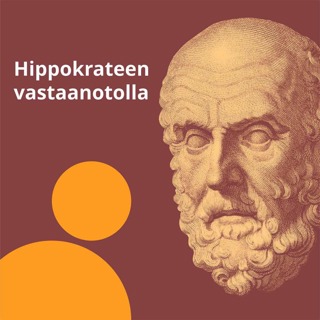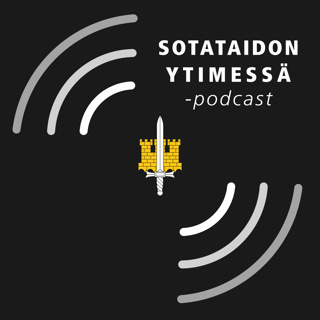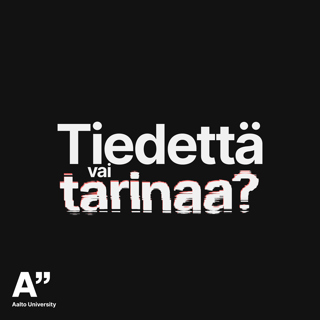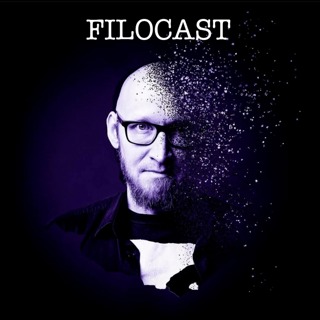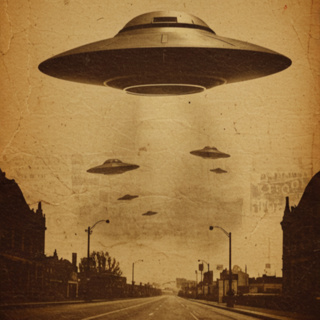
2004 USS Nimitz "Tic-Tac" Encounter
The 2004 USS Nimitz UAP encounter involved multiple unidentified aerial vehicles (UAPs) detected by the USS Princeton's radar for several days in November 2004 off the coast of Southern California/Baja Peninsula. These objects were tracked descending rapidly from high altitudes (over 80,000 feet).On November 14, Cmdr. David Fravor and Lt. Cmdr. Alex Dietrich were diverted to investigate a radar contact. They visually observed a white, Tic-Tac shaped object, approximately 45 feet long, with no visible wings, engines, or propulsion, moving erratically over an area of disturbed water. Four crew members saw it visually.Fravor reported the object appeared aware of their presence and mirrored his movements. When he attempted to intercept, it accelerated instantaneously and disappeared from view. The USS Princeton radar reacquired the object 60 miles away seconds later, indicating performance vastly superior to advanced fighter aircraft. Another crew later filmed the object with infrared (FLIR1 video), which showed no typical exhaust plume.The object's maneuvers, including descending 80,000 feet in less than a second (implying speeds > 45,000 mph and > 2,000g based on standard models), are beyond the limits of known physics and terrestrial technology. Such forces would be lethal to human occupants. The UAP also demonstrated stealth against radar and appeared to be able to visually 'cloak'. It was difficult to track continuously. The possibility of undersea operation was considered, though a submarine operating nearby detected nothing unusual.Witnesses included multiple pilots, weapons system officers, and radar operators across several ships and aircraft. Despite the dramatic encounter, there was no official investigation immediately afterward, and crew members reported facing ridicule.The incident was later investigated as part of the Advanced Aviation Threat Identification Program (AATIP). An AATIP report concluded the "Anomalous Aerial Vehicle" was of unknown origin, not US or foreign technology, and possessed capabilities far exceeding existing or near-future aircraft. Explaining the object's performance may require entirely new forms of physics not yet discovered. Speculative concepts like warp drive, which manipulates spacetime, have been considered as theoretical possibilities, and research into such areas was part of AATIP-related work. Fravor testified about the event to Congress in 2023.Skeptics offer alternative explanations such as radar glitches, optical illusions, camera effects (glare, parallax, bokeh), weather balloons, or advanced drones. However, witnesses like Fravor dismiss these explanations, while Dietrich is wary of jumping to extraterrestrial conclusions.
21 Touko 15min

Los Alamos Green Fireballs
Green fireballs are a type of unidentified flying object (UFO) first reported in late 1948, primarily in New Mexico. Early witnesses described them as a bright "green ball of fire" or like a large green meteor. A key concern for the U.S. government was their concentration around highly sensitive installations, particularly the Los Alamos and Sandia atomic-weapons laboratories, and other military sites. This led many, including military intelligence and astronomer Dr. Lincoln LaPaz, to suspect they could be Soviet spy devices or perhaps secret U.S. unconventional defensive devices.Observations suggested these objects were atypical of natural meteors. Dr. LaPaz noted they lacked a train of sparks or a dust cloud. Reports included balls of fire descending at an angle and then leveling off into a horizontal flight path. Searches after potential flight paths found no meteor fragments or debris.The U.S. government responded with investigations, including a February 1949 conference at Los Alamos which was unable to identify the origin. Project Twinkle was established for observation, but was discontinued, concluding officially that the phenomena were likely natural in origin.Various explanations have been proposed. Mainstream views included natural bolides or meteors, though this was questioned by some. Some ufologists considered them of artificial, extraterrestrial origin. Scientists and technicians at Los Alamos reportedly theorized they were extraterrestrial probes from a hovering "spaceship". Other explanations included sequelae of atomic weapons tests or aircraft associated with secret military projects. UFO researcher Robert Hastings suggests trajectories align with nuclear fallout clouds from testing. More recently, physicist Dr. Stephen Hughes theorized a connection to ball lightning or electrified air, suggesting the green color is from ionized oxygen and erratic movements indicate an electrical nature, although acknowledging this explains one mystery with another.Green fireballs continue to be reported in various locations globally. The historical concentration of these sightings near sensitive nuclear sites is part of a broader pattern of unexplained aerial phenomena reported near nuclear facilities since the atomic age.
13 Touko 16min

Lake Superior UFO: When an F-89 Vanished Chasing an Unknown
On November 23, 1953, over Lake Superior near the U.S.-Canadian border, an incident known as the Kinross Incident occurred. Radar operators detected an unknown object flying in restricted airspace. In response, a USAF F-89C Scorpion jet piloted by First Lieutenant Felix Moncla Jr., with Second Lieutenant Robert L. Wilson as radar operator, was scrambled from the nearby Kincheloe (Kinross) Air Force Base to investigate.The jet pursued the object for about 30 minutes, flying at speeds up to 500 miles per hour. Ground Control directed the F-89 as its onboard radar had problems tracking the object, which allegedly kept changing course. Ground Control watched on their radar screen as the two blips, representing the jet and the unknown object, got closer until they merged into a single blip about 70 miles off the Keweenaw Peninsula. The IFF (Identification, Friend or Foe) signal from the F-89 was lost when the blips merged. The single blip continued briefly before vanishing from the radar screen. Attempts to contact the jet were unsuccessful.Immediately following the disappearance, the USAF reported that the jet "was followed by radar until it merged with an object 70 miles off Keweenaw Point in upper Michigan". This statement was soon retracted. A new official explanation emerged: the radar operator had misread the scope, the mission was successfully completed, and the "UFO" was identified as an off-course Royal Canadian Air Force C-47 aircraft flying from Winnipeg to Sudbury. They suggested the F-89 pilot, Lieutenant Moncla, likely suffered from intense vertigo and crashed into Lake Superior while returning to base.However, the Royal Canadian Air Force denied that any of their aircraft were off course or were the subject of an interception that night. The crew of the C-47 aircraft reportedly saw no signs of an American aircraft. Furthermore, sources mention conflicting explanations allegedly given to Moncla's widow by different Air Force representatives. The official Project Blue Book file attributed the incident to vertigo and atmospheric conditions, stating the mission was successful. The National Investigations Committee on Aerial Phenomena (NICAP) claimed that mention of the mission was expunged from official records.Despite extensive search and rescue efforts by both the United States and Canadian Air Forces, no trace of the aircraft or its occupants was ever found. Reports of potential wreckage found years later in 1968 proved unsubstantiated or were not confirmed to be the F-89. A widely circulated claim in 2006 about finding the wreckage alongside a metallic disc was exposed as a hoax.Prominent UFO writer Donald Keyhoe detailed the incident in his 1955 book The Flying Saucer Conspiracy, portraying the radar merge as a physical collision. Technical analysis suggests that the radar equipment used at the time had a limited resolution (around half a mile for the AN/FPS-3 system), meaning two objects could appear as a single blip when in close proximity without necessarily colliding. It is also noted that the F-89C model had known structural and engine issues and was restricted in performance.The disappearance remains officially unexplained. The conflicting official accounts, the RCAF's denials, the lack of wreckage, and the unusual radar event contribute to the enduring mystery and have fueled various theories, including those involving Unidentified Flying Objects (UFOs) or Unidentified Anomalous Phenomena (UAPs).
8 Touko 18min

The Height 611 UFO Incident: Evidence and Discussion
The Dalnegorsk Incident, often called the "Roswell of the Soviet Union," occurred on January 29, 1986, at 7:55 pm in Dalnegorsk, Russia. Eyewitnesses saw a reddish or orange-reddish spherical object, about three meters (or 10 feet) in diameter, flying noiselessly and parallel to the ground. Its color was described as similar to burning or burnished stainless steel. One witness noted it ascended and descended, its glow intensifying each time it rose. It "jerked" and fell down like a rock before crashing into Izvestkovaya Mountain, also known as Height or Hill 611. A powerful impact was heard. There was an explosion and a fire that burned for varying durations, reported from a few minutes to about an hour or more. One report stated the object made six attempts to take off while aflame before slowly rising and flying away an hour later.Days after the event, a team led by scientist/ufologist Valeri Dvuzhilni investigated the crash site. They found a high-temperature exposure site about 2x2 meters (6.5' x 6.5'). Rocks were covered in a black film, the ground was black ash, and a burnt tree stump turned to porous coals. The burned area was sharply defined.Materials collected included melted drops with a metallic tint, solidified droplets, black vitreous particles, and unusual loose scaly particles called "tiny nets" or "mesh".Analyses in Soviet laboratories revealed unusual properties. Smaller metallic drops were a lead alloy with up to 17 elements. Larger ones were extremely hard compounds requiring a diamond saw to cut. The metal alloy was amorphous. Vacuum melting caused elements like gold, silver, and nickel to disappear, while molybdenum and beryllium sulfide appeared. The mesh was amorphous carbon containing numerous elements, including rare earth atoms, zinc, silver, and gold. It contained very thin (17 micrometers) quartz threads twisted into bundles, interwoven with even thinner gold wires. Experts found the technology and structure difficult to understand or reproduce with technology at the time. Silicic shale rocks at the site were magnetized. The isotopic composition of lead suggested a terrestrial origin from the northern Baikal region.The crash site was described as an anomalous zone with adverse effects on people, including blood changes, high blood pressure, quickened pulse, inexplicable fear, sensor failure, and loss of coordination. It also affected photographic materials. Electromagnetic fields reportedly caused interference and corrupted computer files during UFO activity.Following the crash, high UFO activity was reported in Dalnegorsk. In November 1987, numerous objects were seen, some flying over or hovering near Height 611 and illuminating it, witnessed by over 100 people, including military and police.While some theories proposed natural phenomena or military technology, the unusual materials led some scientists, including Dvuzhilni and Doctor of Chemical Sciences V. Vysotsky, to conclude the object was likely an artificial space probe of non-terrestrial origin. The earthly origin of the object has not been convincingly proven. The incident is considered by some to be the "best documented crash" due to the recovered fragments.
6 Touko 10min

Ruwa Zimbabwe UFO Sighting 1994
The Ariel School UFO incident occurred at 10 am on September 16, 1994, at a private school in Ruwa, Zimbabwe, located southeast of Harare. The students, primarily from wealthy families, were on their mid-morning break while the teachers were inside for a meeting. The incident lasted about fifteen minutes.According to interviews with 62 children aged six to twelve, they saw at least one UFO. These objects were described as silver and usually disc-like, appearing in the sky and then floating down to a field of brush and trees just beyond the school property. The location was out of bounds for the children.Witnesses reported between one and four creatures exiting a craft and approaching the children. The beings were described as small, about a meter tall, with big black eyes, small mouths, and noses, dressed in tight black suits. Some descriptions also mentioned long, straight black hair. The beings were sometimes described as moving in a strange, slow-motion, bouncy, or glitching manner, appearing in one place and then reappearing elsewhere. A strange sound, like a whistle or buzzing, was also reported.Many of the children who stayed and watched reported receiving a telepathic message from the creature or creatures. This message was often environmental in nature, warning about the harm humans are doing to the world, pollution, and the dangers of becoming too technologically advanced. Some children saw images of destruction and dying people when looking into the beings' eyes. Not all children reported receiving this message.When the children told their teachers, they were initially dismissed. However, parents became concerned when their children came home frightened and reporting the sighting, leading many to visit the school the next day. The event was reported on ZBC Radio, which brought it to the attention of local UFO researcher Cynthia Hind. Hind visited the school and interviewed some children, asking them to draw pictures. She reported that the children all told her the same story. The BBC's correspondent, Tim Leach, also visited and found the event difficult to comprehend.Later, Harvard professor John Mack, known for investigating UFO sightings and alien abduction phenomena, visited the school to interview witnesses. Nicky Carter, a South African producer, assisted Mack and believed the children were telling the truth based on their demeanor. Mack concluded that the children were describing a real phenomenon and believed their stories were consistent.The incident occurred two days after a wave of UFO sightings throughout southern Africa, including reports of a bright fireball, which a skeptic attributed to the re-entry of a rocket booster.Many of the witnesses maintain their accounts as adults. Some, like Emily Trim, have continued to process the experience through art. The experience had a profound and sometimes traumatic impact on the children, especially those who were not believed or were ridiculed. Mack also faced challenges to his credibility and work at Harvard due to his research into such encounters. Filmmaker Randall Nickerson made a documentary titled "Ariel Phenomenon" which revisited the event and interviewed former students as adults, finding their stories consistent with their childhood accounts.
30 Huhti 13min

Lubbock Lights Phenomenon
The Lubbock Lights phenomenon refers to a series of UFO sightings that primarily occurred in August and September 1951 in Lubbock, Texas. The case gained prominence after an initial sighting on the evening of August 25 by a group of four Texas Tech professors (a geologist, a chemical engineer, a physics professor, and the head of petroleum engineering). They observed a formation of 15 to 30 bright, glowing, bluish-green lights pass silently overhead in a V-shape, followed by a more haphazard formation later that night. Their status as technically qualified individuals made their accounts particularly notable. Over the following weeks, hundreds of other residents reported seeing similar lights, making it a repeated phenomenon rather than a single event.On August 30, 1951, Texas Tech freshman Carl Hart Jr. captured five photographs of the lights, showing them in a "v" formation. These Hart photographs were widely published. An analysis by Wright-Patterson Air Force Base deemed them "never proven to be a hoax, but neither were they proven to be genuine". The photos showed blurred, circular light sources that appeared significantly brighter than stars. The professors, however, noted that the formation in the photos didn't match the "u" formation they had observed.The U.S. Air Force, through Project Blue Book led by Edward J. Ruppelt, conducted an investigation. Ruppelt interviewed witnesses and initially considered the possibility that the lights were plover birds reflecting new mercury-vapor street lights. However, this explanation was contested by wildlife experts and witnesses who cited the objects' speed, size, silence, and formation. Ruppelt later provided a vague explanation for the professors' sightings, stating they were a "very commonplace and easily explainable natural phenomenon" but refused to give specifics to protect a scientist's identity. In a later edition of his book, he identified the cause as night flying moths reflecting light. Ruppelt's explanation is widely criticized as evasive and unsatisfactory by many who believe it failed to address contradictory evidence. The professors' sightings were officially classified as "unknowns".Related events around the same time include an Atomic Energy Commission employee and his wife in Albuquerque seeing a large, silent "flying wing" with glowing bluish lights on August 25, just before the professors' sighting. Radar detected a target traveling 900 mph near a Washington State air defense station shortly after the Lubbock sightings. Some sources also mention claims of flying orbs near the Pantex nuclear plant near Amarillo, which was established as a nuclear weapons facility in 1951, and sightings of green orbs near the Los Alamos nuclear site during a similar timeframe. The proximity of these sightings to nuclear facilities is noted as a potential pattern.Various alternative explanations have been proposed, including a classified USAF "flying wing" aircraft, a top-secret military test (potentially testing military responses to UFOs), or interplanetary spacecraft. The documented existence of projects like Project 1794, a USAF effort to build a flying saucer, lends some weight to the idea of experimental aircraft.Despite investigations and publicity, the mystery of the Lubbock Lights remains unsolved for many, leaving a lasting mark on local lore and UFO history.
30 Huhti 11min

Rendlesham Forest Incident
Date: October 26, 2023Subject: Review of the Rendlesham Forest Incident, December 1980Sources: 20150511-FOI2015-03810-Rendlesham-Redacted-Final-Response.pdf, 810113_Halt_Memo.pdf, Encounter in Rendlesham Forest (Nick Pope, 2016), Wikipedia, You Can’t Tell the People (Georgina Bruni)Executive Summary:The Rendlesham Forest incident, unfolding near RAF Bentwaters and RAF Woodbridge in Suffolk, England, in late December 1980, ranks among the most famous and debated UFO events. Military personnel reported unusual lights and a metallic object in the forest, sparking investigations and conflicting narratives. Lt. Col. Charles Halt’s memo to the Ministry of Defence (MoD) and his live audio recordings anchor the case. Theories range from extraterrestrial activity to misidentified phenomena or a hoax, amplified by the bases’ rumored nuclear weapons and defense implications.Key Themes and Ideas: Initial Sightings: On December 26, 1980, security police at RAF Bentwaters/Woodbridge spotted odd lights in Rendlesham Forest. Reports persisted over subsequent nights, with witnesses describing a bright object and erratic, colorful lights. Halt’s Investigation: On December 28, Deputy Base Commander Lt. Col. Charles Halt led a team into the forest. Armed with a Geiger counter and recorder, they noted three ground indentations and flickering lights. His memo to the MoD, possibly sent without approval, detailed this: "That memo should never have been sent. If I had known about it, I would have tried to retract it." Radiation Readings: Using an AN/PDR-27 meter, Halt’s team recorded 0.07 milliroentgens per hour in the depressions—higher than the 0.03-0.04 background levels, though not dangerous. Halt noted, "We’re still comfortably safe here." Debate lingers over their significance. Physical Evidence: Three indentations formed a triangle, and nearby trees showed abrasions and sap marks facing the center. Englund said, “Each one of these trees that face into the blast—what we assume is a landing site—all have an abrasion facing in the same direction…” Samples were collected. Lights and Object: Witnesses saw a metallic object and lights like “an eye winking at you” (Halt) or “half-moon shapes dancing about with coloured lights,” shifting to “full circles” as if eclipsed. MoD Response: The MoD downplayed it as “unexplained lights” of “no defense significance,” adhering to their “neither confirm nor deny” nuclear weapons policy. Nick Pope, ex-MoD, later highlighted its importance. Parliamentary questions probed possible Porton Down involvement. Skeptical Views: Explanations include misidentified stars, the Orford Ness lighthouse, or a hoax. Ian Ridpath’s analysis leans on natural sources. Nuclear Context: With possible nuclear weapons at the bases, some tie the event to security breaches, though the NCND policy obscures clarity. Witness Variability: Accounts differ, some evolving over time. Speculation of sodium Pentothal use suggests memory manipulation: “It can work alongside hypnosis by suppressing or implanting information…” UFO Trail: A tourist trail now marks the site, boosting its cultural footprint.Quotes: Halt: “3.05: We see strange…strobe-like flashes…there’s definitely something there, some kind of phenomena.” Englund: “…all have an abrasion facing in the same direction toward the center…” Bruni (quoting Lord Hill-Norton): “These events alone…contradict any idea that UFOs are of ‘no defence significance’…” Gen. Gordon Williams: “This is a tender area…the ‘neither confirm nor deny’ policy has stood up well.”Conclusion:The Rendlesham Forest incident defies resolution, blending compelling evidence with skepticism. Its legacy endures in UFO lore, driven by unanswered questions about military secrecy, physical traces, and what transpired in December 1980
25 Helmi 10min






